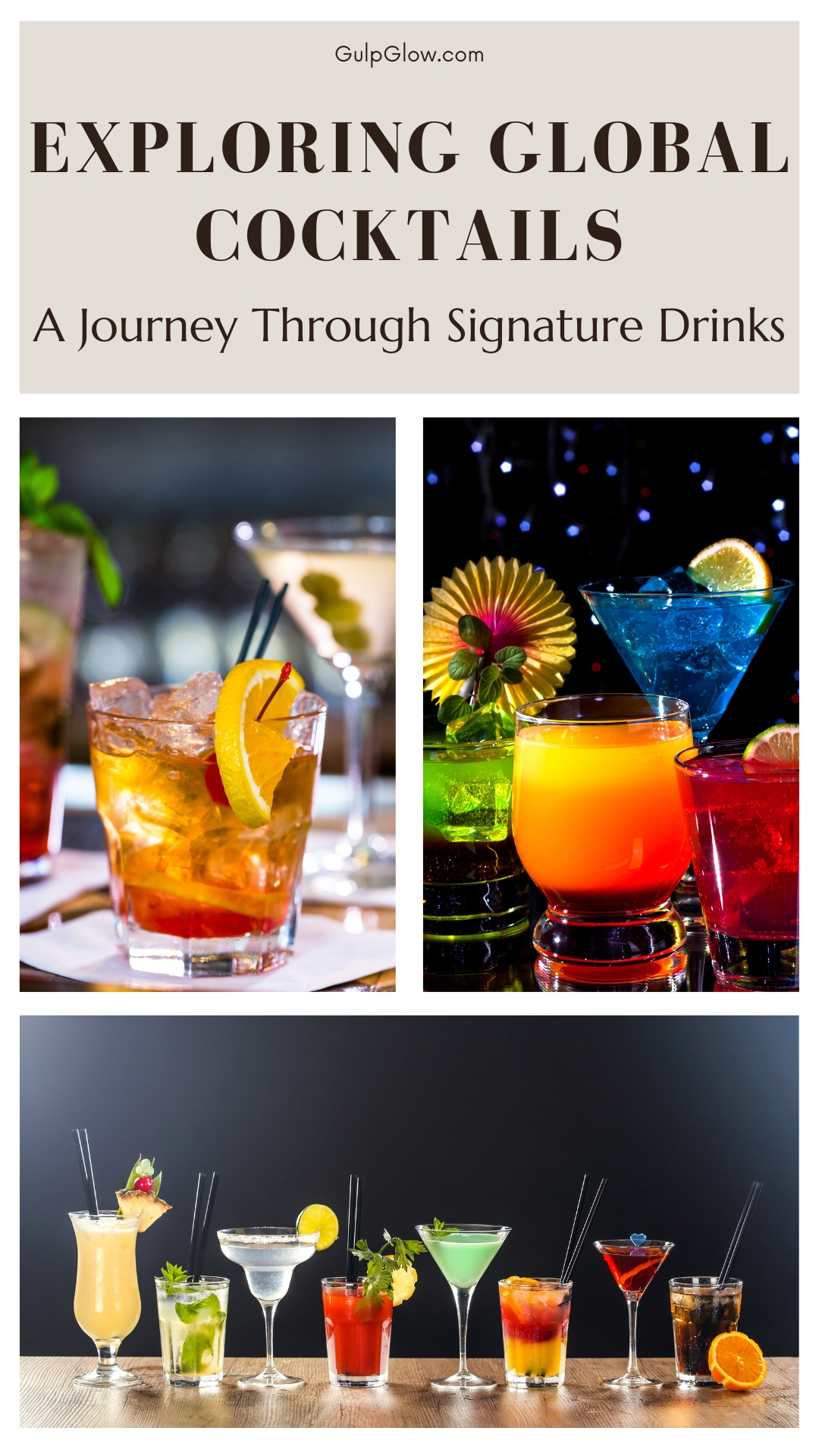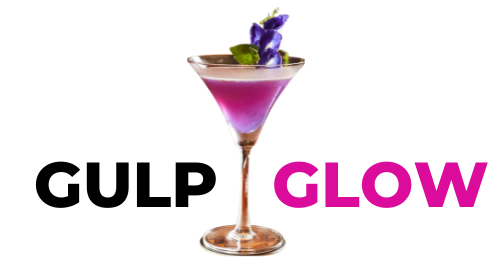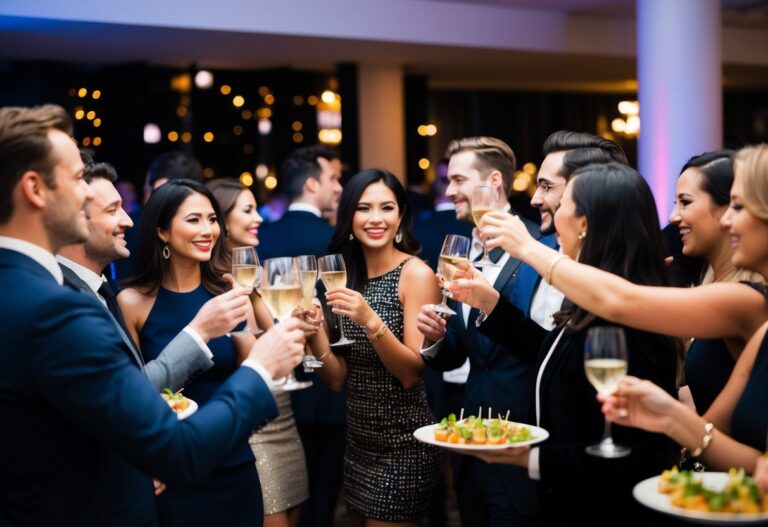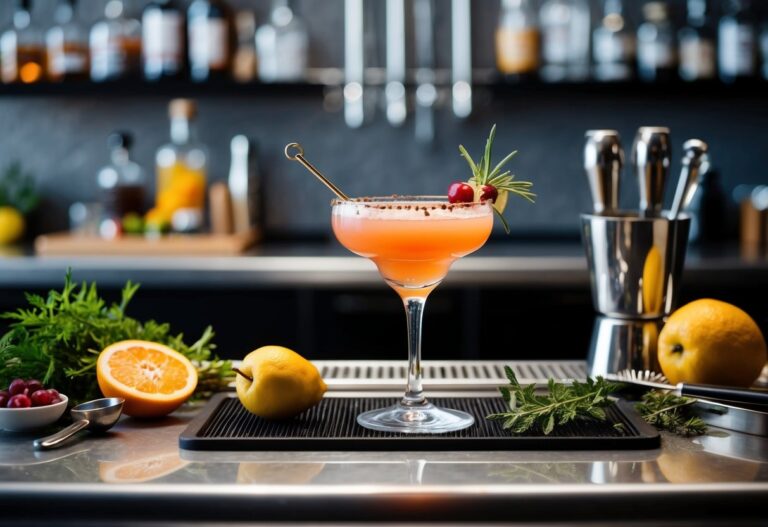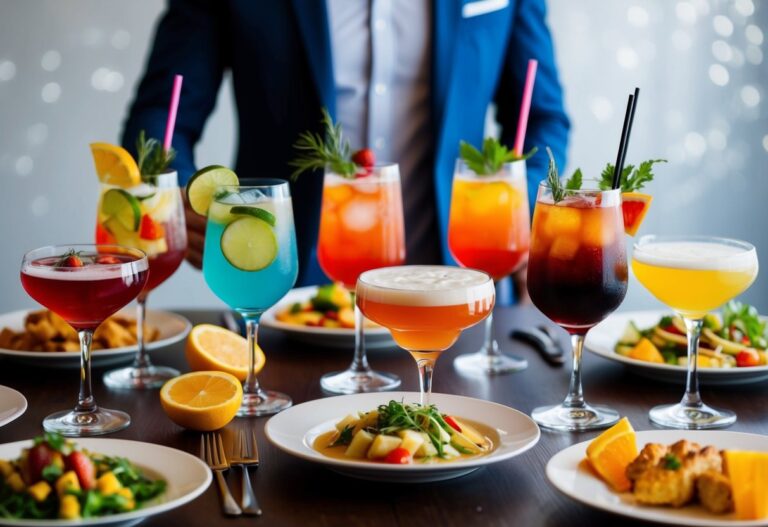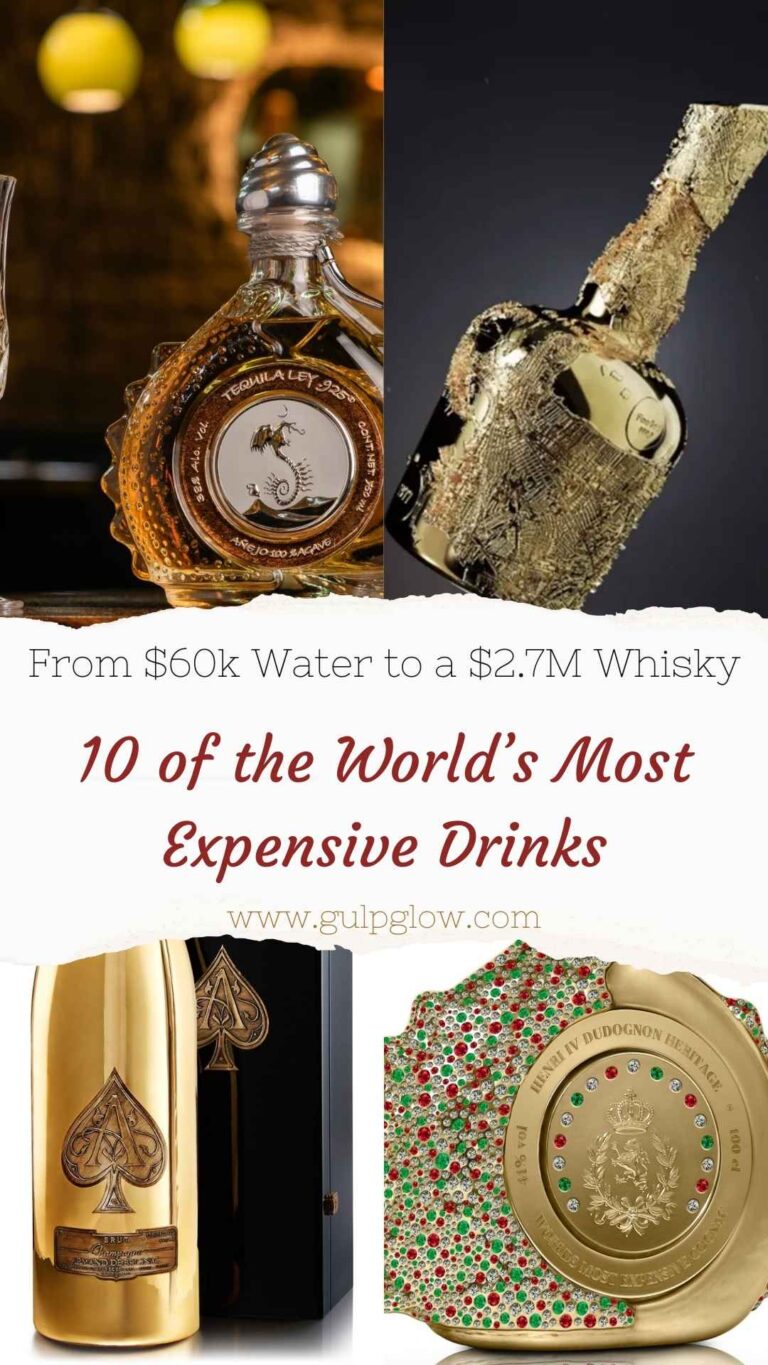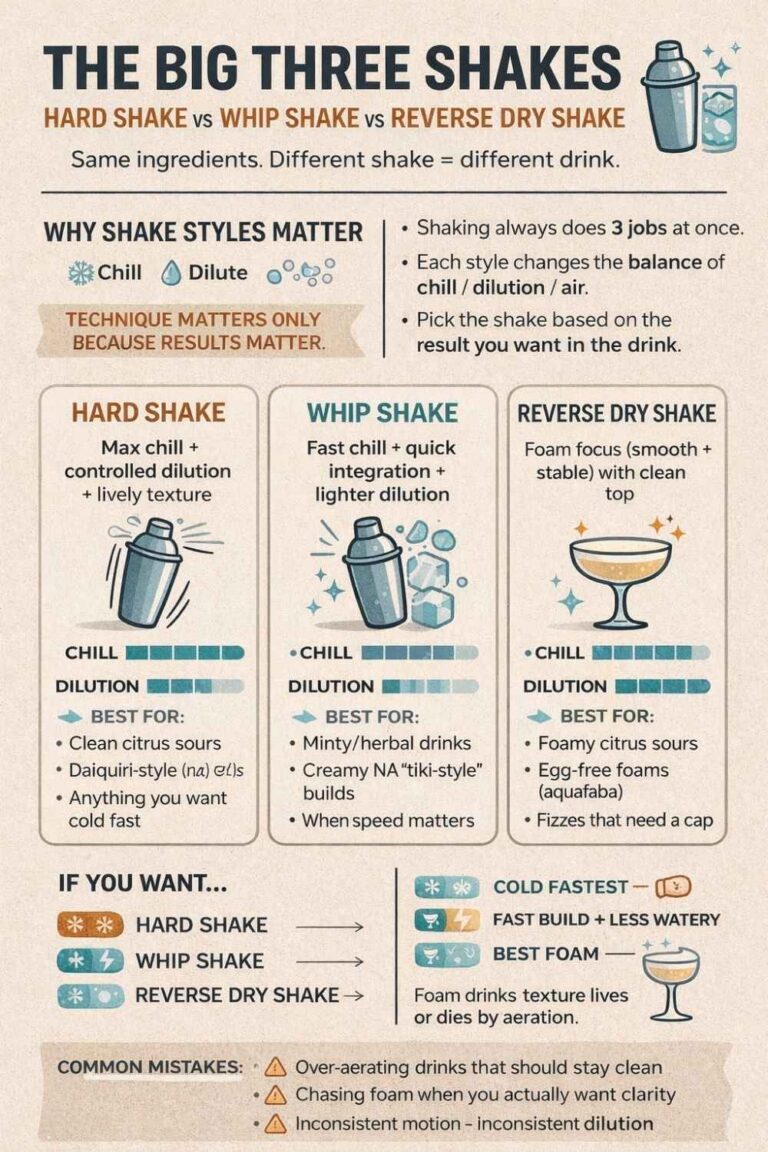Exploring Global Cocktails: A Journey Through Signature Drinks
Have you ever wondered about the stories behind your favorite cocktails? Exploring the unique flavors and origins of signature cocktails from around the world can be an adventure in itself. From Cuba’s refreshing mojito, which combines rum, sugarcane, lime, and mint, to Spain’s fruity sangria, each drink carries a rich history that reflects its culture.
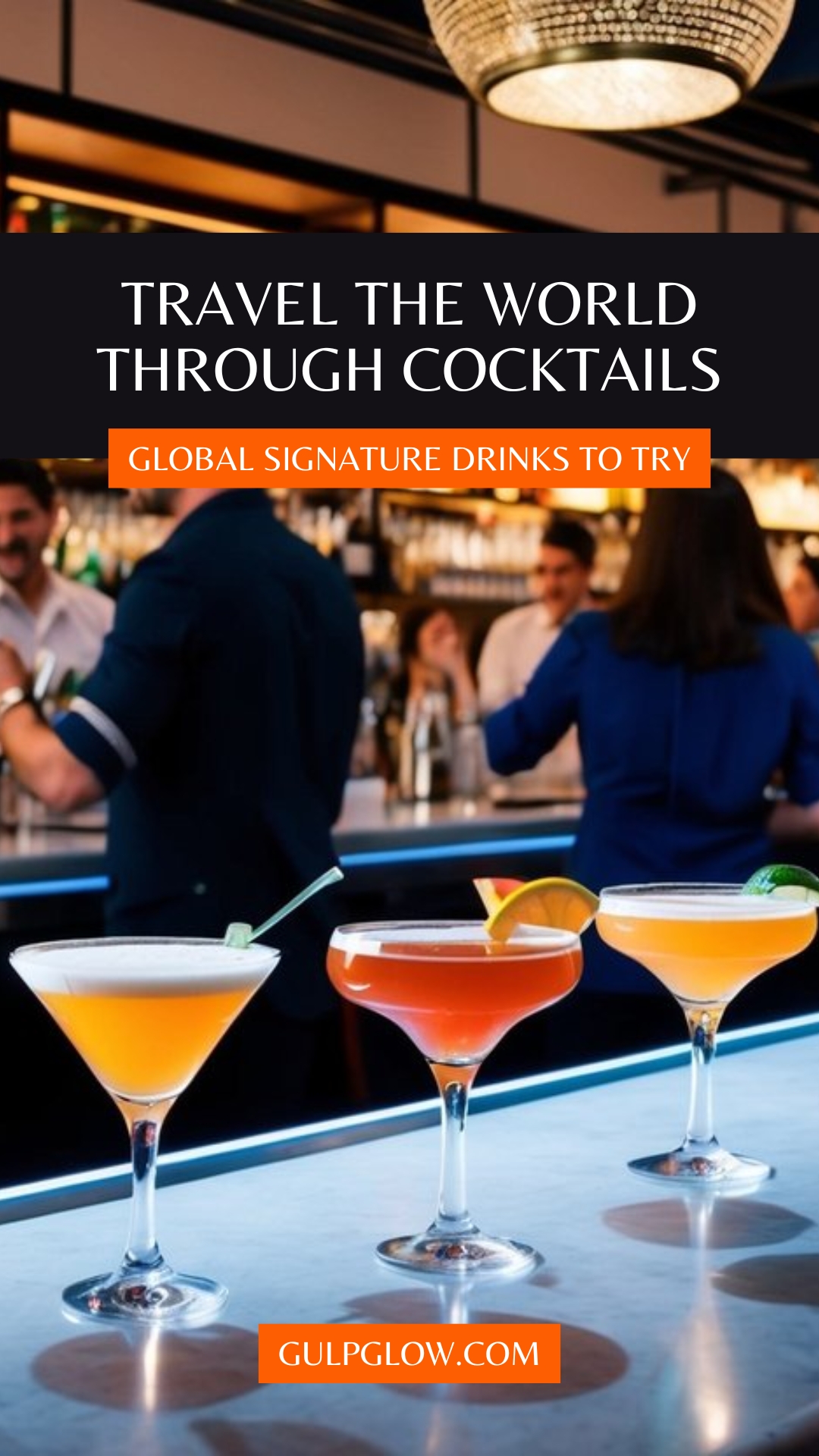
Picture yourself savoring a Virgin Pina Colada from Puerto Rico, a tropical delight that even kids can enjoy. Or perhaps mixing up an elegant gin-based cocktail with orange liqueur and lime juice, garnished with a dash of Angostura bitters. These drinks don’t just taste good—they offer a glimpse into the traditions and innovations of different regions.
So why not shake things up and try making these exotic drinks at home? Whether you’re seeking to impress your friends or simply enjoy a taste of travel from your own kitchen, learning about these international cocktails is a delicious journey worth taking.
Origin Stories of World-Famous Cocktails

Understanding the colorful histories behind some of the world’s most beloved cocktails can enhance the enjoyment of these classic beverages. We’ll uncover the unique beginnings of a few iconic drinks from Brazil, Italy, and Mexico.
Brazil’s Caipirinha
The Caipirinha is Brazil’s national cocktail, derived from the Portuguese word “caipira,” which means “country folk.” This drink is created with Cachaça, lime, and sugar.
Cachaça, a Brazilian spirit, is distilled from fermented sugarcane juice. The drink’s origins trace back to the early 20th century in São Paulo, where it was originally used as a medicinal drink. Locals believed it could ward off the Spanish flu by combining it with garlic and honey.
Ingredients:
- Cachaça: The soul of the drink, providing a bold flavor.
- Lime: Adds a refreshing citrus note.
- Sugar: Balances the tartness.
Italy’s Negroni
The Negroni is a sophisticated cocktail with a rich history originating in Italy. This classic drink consists of gin, Campari, and sweet vermouth.
The story goes that in 1919, Count Camillo Negroni asked a bartender in Florence to strengthen his Americano by replacing soda water with gin. The bartender obliged, and thus the Negroni was born.
Ingredients:
- Gin: Provides a botanical base.
- Campari: Adds a bitter edge.
- Sweet Vermouth: Balances with sweet notes.
A simple orange peel garnish completes this timeless drink.
Mexico’s Margarita
The Margarita, a staple of Mexico, is a cocktail made with tequila, lime juice, and triple sec.
Tequila, derived from the blue agave plant, is the star of this refreshing beverage. The origins of the Margarita are debated, with one popular story dating back to 1938 when Carlos “Danny” Herrera supposedly created it at his restaurant in Tijuana for a picky customer allergic to all spirits except tequila.
Ingredients:
- Tequila: The heart of the drink.
- Lime Juice: Adds tartness.
- Triple Sec: Provides a sweet, citrus flavor.
A salted rim is often added to elevate the experience, giving it a savory twist.
Cocktail Culture by Region
Each region of the world has its unique approach to cocktails, shaped by its local ingredients, history, and culture. From the fresh, tropical flavors of the Caribbean to the rich history of European classics, explore how these iconic drinks represent their regions.
Caribbean Rum Punch and Mojitos
In the Caribbean, Rum Punch is a go-to drink. It’s made with rum, fruit juices like pineapple or orange, a dash of grenadine, and freshly grated nutmeg on top. It’s packed with tropical flavors that scream sunshine and relaxation.
The Mojito has its roots in Cuba. Made with white rum, lime juice, sugar, soda water, and mint, it’s refreshing and perfect for hot climates. Some believe its origins date back to indigenous tribes in Cuba using similar ingredients.
European Classics: Sangria and Spritz
Sangria hails from Spain and is a delightful mix of red wine, chopped fruit, and often some additional liquor like brandy. It’s a popular social drink, rooted in ancient Greek and Roman traditions of mixing wine with spices and fruits.
The Italian Spritz, notably the Aperol Spritz, is another European favorite. Typically made with Aperol, prosecco, and a splash of soda water, it’s a perfect pre-dinner drink known for its bright orange color and slightly bitter, fizzy taste.
North American Favorites: Bloody Mary and Caesar
In North America, the Bloody Mary is a staple, especially for brunch. Made with vodka, tomato juice, and various spices and flavorings including Worcestershire sauce, hot sauce, and celery, it’s more like a meal in a glass than just a drink.
Canada’s version, the Caesar, is similar but uses Clamato (a mix of clam and tomato juices) instead of just tomato juice. It’s garnished with celery, lime, and sometimes more adventurous items like shrimp or bacon.
Asia’s Unique Concoctions: Singapore Sling and Chicha Morada
The Singapore Sling is a historic cocktail from Singapore. Invented at the Raffles Hotel, it includes gin, cherry brandy, and other ingredients like pineapple juice and lime juice. It’s known for its vibrant pink color and tropical taste.
Chicha Morada from Peru might be lesser-known but is equally intriguing. Made with purple corn, pineapple, cinnamon, clove, and sugar, it’s a non-alcoholic drink that showcases the region’s traditional ingredients and flavors. It’s often spiced up and served cold, making it a refreshing treat.
Crafting the Perfect Cocktail

Creating the perfect cocktail involves using the right tools and mastering essential mixology techniques. Whether you’re shaking up a classic Moscow Mule or experimenting with your own concoctions, understanding these basics will set you up for success.
Essential Bar Tools
Having the right tools can make or break your cocktail-making experience. Here’s a list of must-haves:
- Cocktail Shaker: Perfect for mixing ingredients and chilling your drink. Common types include the Boston shaker and the Cobbler shaker.
- Jigger: Essential for measuring precise amounts of liquids. Look for one with multiple volume markings.
- Bar Spoon: Longer than a regular spoon, ideal for stirring and layering drinks.
- Muddler: Used for crushing ingredients like fruits and herbs to release their flavors.
- Strainer: Helps you pour the cocktail without unwanted bits. Common types include Hawthorne and fine mesh strainers.
- Citrus Juicer: A handy tool for fresh juice, bringing more flavor to your drinks.
- Ice: Different cocktails call for different types of ice—crushed, cubed, or a large single piece.
Equipping your bar with these essentials ensures you’re ready to tackle any recipe.
Mixology Techniques
Understanding key techniques is crucial for crafting delicious cocktails. Here are some you should master:
- Shaking: This method chills and aerates the drink. Typically used for cocktails with fruit juices, dairy, or egg white. Use your cocktail shaker effectively for this.
- Stirring: Ensures even dilution and temperature without adding air. Ideal for spirit-forward drinks like a classic Whisky Old-Fashioned.
- Muddling: Crushes fruits, herbs, or spices to release their flavors. Remember to muddle gently to avoid bitterness, especially with herbs.
- Layering: Creates visually appealing drinks. Pour each ingredient slowly over the back of a spoon to layer neatly.
- Straining: After shaking or stirring, use a strainer to pour the drink, ensuring it’s smooth and free of pulp or ice shards.
- Blending: Great for frozen cocktails like Margaritas. Blending combines ice and ingredients into a smooth, cold concoction.
These techniques provide the foundation for creating a variety of recipes. So grab your tools and start experimenting!
Cocktail Ingredients and Pairings
When making cocktails, the choice of ingredients is everything. The blend of spirits, liqueurs, fresh components, and garnishes creates unique flavors and experiences.
Spirits and Liqueurs
Different cocktails call for various spirits and liqueurs. Tequila is a staple in many Mexican drinks, like the Margarita. It’s made from the blue agave plant. On the other hand, Cachaça, known as Brazilian rum, is essential for making Caipirinhas.
Rum, another versatile spirit, is often used in tropical drinks like Rum Punch. Campari, a bitter Italian liqueur, is key in Negronis. Its distinct taste provides depth and sophistication to cocktails.
For something refreshing, consider a Mint Julep, which uses bourbon. The quality and type of spirit you choose can completely change the character of your drink.
Fresh Ingredients and Garnishes
Fresh ingredients like lime, mint, and herbs play an essential role in cocktail making. Lime juice adds a tart and tangy flavor, often used in Mojitos and Margaritas.
Mint is commonly used in Mint Juleps and Mojitos. It provides a refreshing touch. Fresh fruits like orange and lemon are popular, too. They’re not just for juice but also as colorful garnishes that enhance visual appeal.
Garnishes like lemon peels in a Negroni or a sprig of mint in a Mojito can elevate the drink’s aesthetics and taste. Ingredients such as soda water add fizz to cocktails. Always use fresh and high-quality components for the best results.
Specialty Cocktails from Lesser-Known Regions

Discover the unique flavors of regional cocktails that aren’t as famous as the classic Mojito or Pina Colada, but are just as delightful. From Bermuda to Peru, these drinks capture the essence and tradition of their homelands.
Bermuda’s Rum Swizzle
Bermuda’s Rum Swizzle is often referred to as the island’s national drink. This tropical cocktail combines Gosling’s Black Seal Rum, a hallmark of Bermudian culture, with fresh citrus juices and sweeteners.
To make a Rum Swizzle, you typically mix 4 oz of Gosling’s Black Seal Rum with 4 oz of Gosling’s Gold Rum. Add 2 oz of pineapple juice, 2 oz of orange juice, ¾ oz of grenadine, and ¾ oz of falernum. Stir well and serve over ice.
Often garnished with an orange slice and a cherry, this drink offers a perfect blend of sweet, sour, and spicy. It’s not just a drink; it’s a cultural experience in a glass.
Peru’s Pisco Sour
Originating from Peru, the Pisco Sour is a true gem in the cocktail world. This drink features Pisco, a type of brandy made from fermented grape juice.
Creating a Pisco Sour involves shaking 2 oz of Pisco, 1 oz of simple syrup, 1 oz of fresh lime juice, and a dash of Angostura bitters. Adding an egg white gives the drink its characteristic frothy top.
The first sip reveals a smooth, tangy, and slightly sweet flavor that keeps you wanting more. This cocktail not only highlights a unique spirit but also Peru’s rich winemaking tradition. The Pisco Sour is often enjoyed as a pre-dinner drink, offering a delightful introduction to Peruvian culture.
Innovative Twists on Traditional Drinks
In this section, you will discover creative takes on classic cocktails. These drinks have been reimagined in exciting ways that bring new flavors and experiences.
Tropical Escapes: Hawaii’s Mai Tai
Hawaii gives the Mai Tai a unique twist, embracing local ingredients to enhance this tropical drink. Traditional Mai Tai includes rum, lime juice, orgeat syrup, and orange liqueur. Hawaiian bartenders add pineapple juice and passion fruit to give it an island flair.
Freshly squeezed juices make the flavor pop. Garnished with fresh Hawaiian pineapple and mint leaves, this version of the Mai Tai captures the spirit of the islands. The next time you sip on a Mai Tai in Hawaii, you’ll taste the difference fresh, local ingredients make.
The Reinvention of Classics
Classic cocktails like the Paloma, Michelada, and Moscow Mule are getting modern updates. The Paloma, traditionally made with tequila, grapefruit soda, and lime, now features zesty blood orange or hibiscus syrup for a fresh twist. Bartenders are also introducing Mescal for a smoky depth.
The Michelada, a beer cocktail with hot sauce, lime, and tomato juice, gains a balanced flavor with craft beers and diverse spices. Lastly, the Moscow Mule, usually vodka, ginger beer, and lime, sees variations like the Kentucky Mule, substituting bourbon, or the Mexican Mule using tequila.
Each twist opens a new chapter in the beloved history of these classic drinks.
Celebrating with Cocktails

Raise a glass and toast to good times with delicious cocktails. Whether you’re hosting a lively party or gearing up for the holidays, these drinks add flair to any celebration.
Cocktail Parties and Socials
When you think of cocktail parties, elegance and enjoyment come to mind. Margaritas, with their tangy lime and salt-rimmed glasses, are always a crowd-pleaser. They bring a touch of summer to your gathering, regardless of the season.
Moscow Mules are another fantastic choice. Their copper mugs make them stand out, and the mix of vodka, ginger beer, and lime is refreshing.
Creating a signature cocktail for your event can make it even more memorable. Imagine introducing your friends to a Mango Lassi cocktail, blending Indian tradition with a twist of tropical flavor.
Here are some quick tips:
- Have a mix of alcoholic and non-alcoholic options
- Prepare large batches for easier serving
- Use fresh, high-quality ingredients
Festive Drinks for the Holiday Season
The holiday season is the perfect time to enjoy festive cocktails. Think of the warm, cozy flavors that make cold nights enjoyable. At the European Christmas Markets, you might find spiced mulled wine or eggnog.
For a unique touch, try crafting a holiday Margarita. Use cranberry juice and a sprig of rosemary for a festive twist that delights the senses.
Holiday cocktails often feature spices like cinnamon, nutmeg, and cloves, adding a comforting aroma to your celebrations.
Popular choices include:
- Mulled Wine: Red wine with spices, perfect for cold nights.
- Eggnog: Rich and creamy, often spiked with rum or bourbon.
- Cranberry Margarita: A festive take on the classic.
When planning your holiday drink menu, include options that cater to all tastes, ensuring everyone finds something they love. Don’t forget to add garnishes like fresh cranberries or orange slices to make your drinks look as good as they taste.
Cocktails and Global Influence
Cocktails have evolved over the years, influenced by diverse cultures and modern trends. These influences can be seen in the rise of craft cocktails and how they are showcased in pop culture and media.
The Rise of Craft Cocktails
Craft cocktails are a big deal now, aren’t they? They’re all about high-quality ingredients and inventive mixes. This movement took off in the early 2000s and shows no signs of slowing down. It’s like the food revolution but for drinks!
Bartenders today are like chefs. They forage for unique herbs, master rare techniques, and even age their own spirits. That’s dedication. Some popular examples include the Smoked Old Fashioned and the Lavender Martini. People love these drinks because they’re more than just alcohol – they’re experiences.
Did you know? Craft cocktails often use local ingredients to make them special. This helps support local farmers and makes each cocktail unique to its region.
Cocktails in Pop Culture and Media
Cocktails aren’t just for bars; they’re stars in movies and TV shows too. Think of James Bond with his “shaken, not stirred” Martini, or the ladies of Sex and the City sipping Cosmopolitans. These iconic drinks make characters seem cooler or more sophisticated, don’t they?
Social media is another game-changer. Instagram, TikTok, you name it – everyone shares their colorful creations online. #CocktailCulture is huge. This online visibility drives trends, making some cocktails go viral overnight.
Believe it or not, even TV cooking shows are getting in on the action. Shows like “Top Chef” and “MasterChef” often feature mixologists. This boosts cocktail culture and educates the public about what goes into a great drink.
By the way, next time you’re enjoying a cocktail at home, think about all these influences. It’s fascinating how a simple drink can have such a rich and varied history, isn’t it? 🍹
Frequently Asked Questions
Global cocktails bring a fascinating array of flavors and stories from different cultures. Here, you’ll find information on unique non-alcoholic drinks, traditional alcoholic beverages, popular cocktail recipes, and more.
What are some unique non-alcoholic drinks that different countries are known for?
Many countries have unique non-alcoholic drinks that are beloved by locals.
- India: There’s the refreshing Lassi, a blend of yogurt, water, and spices.
- Japan: Matcha tea, known for its vibrant green color and health benefits.
- Mexico: Agua Fresca, a drink made from fruit, water, and sugar.
Can you list some traditional alcoholic beverages that originate from various countries around the world?
Sure! Here are some famous traditional drinks:
- Scotland: Whisky, made from malted barley.
- Russia: Vodka, distilled from grains or potatoes.
- Cuba: Mojito, a mix of rum, sugar, lime, mint, and soda.
Where can I find recipes for the most famous global cocktails, and are they suitable for beginners to mix?
You can find many cocktail recipes online, especially on cooking and mixology websites. Books such as “Cocktails From Around the World – 20 Signature Drinks to Make at Home” offer step-by-step guides.
What cocktails derive their names from countries, and what are the stories behind them?
Some cocktails are named after countries or cities:
- Singapore Sling: Created at Raffles Hotel, meant to look like a fruit juice.
- Manhattan: Named after the New York City borough.
- Moscow Mule: Known for its copper mug, named to evoke Russian vodka.
Could you recommend a book that comprehensively explores cocktails from around the world?
For a detailed look into global cocktails, check out “Mixology Around the World: Global Cocktails with Mixellany” by Anistatia Miller and Jared Brown. This book explores the history and culture of various drinks.
How do national signature drinks reflect the culture and history of their countries of origin?
National drinks often use ingredients native to the country and are linked to historical events. Cuba’s Mojito, for example, used ingredients like sugarcane and rum, important to the country’s economy. Similarly, Japan’s Sake has deep connections to the country’s rice farming traditions.
